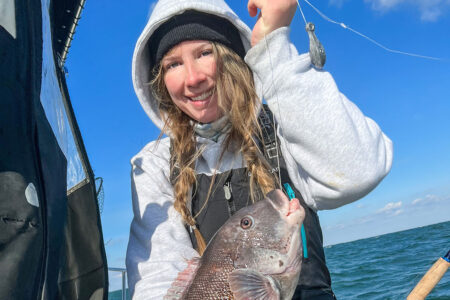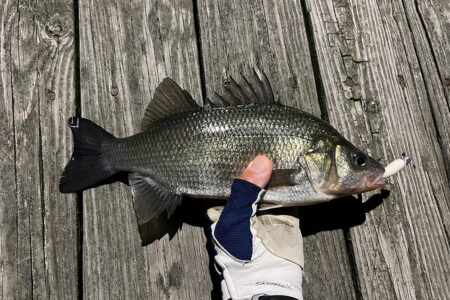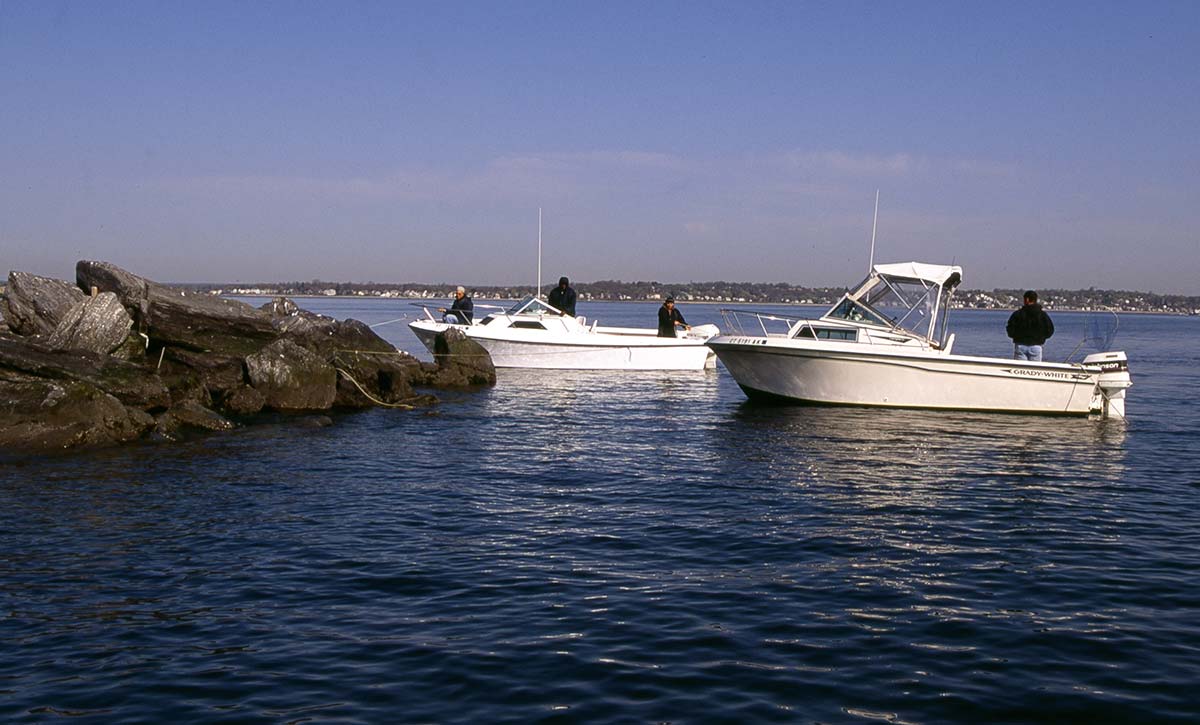
Early season blackfish gather first along breakwalls. Here’s how to target the fall run.
Another record-breaking hot summer in New England created warm water that will likely last well into fall, and those warmer-than-average temperatures may affect the timing of blackfish migration. So what spots should you target in October for the best action and why?
Early Season Cool-Down
Rewinding to late spring, once the bottom water temperature warms to 68 degrees, blackfish leave their nearshore location or “homesite,” regardless of how abundant the food is, and move to deeper, cooler water for the summer. Blackfish then return inshore in early autumn as water temperatures drop, and then again leave the shallows in November when bottom water temperature falls below that magic 50-degree mark, migrating into deeper, warmer water for the winter. In a nutshell, the shallows warm first in spring and cool first in fall, and tog follow their comfort-zone temperatures.
Although blackfish are attracted to all types of rugged structure, one secret to hot October action is to fish along breakwalls rather than traditional deep-water reefs. Breakwalls are found outside many harbors and river mouths, and they tend to hold blackfish a couple of weeks sooner than reefs. Breakwaters, by function, are located near cooler, relatively shallow harbors. Offshore reefs are, of course, located in deeper water that retains the summer heat longer.
Breakwater Basics
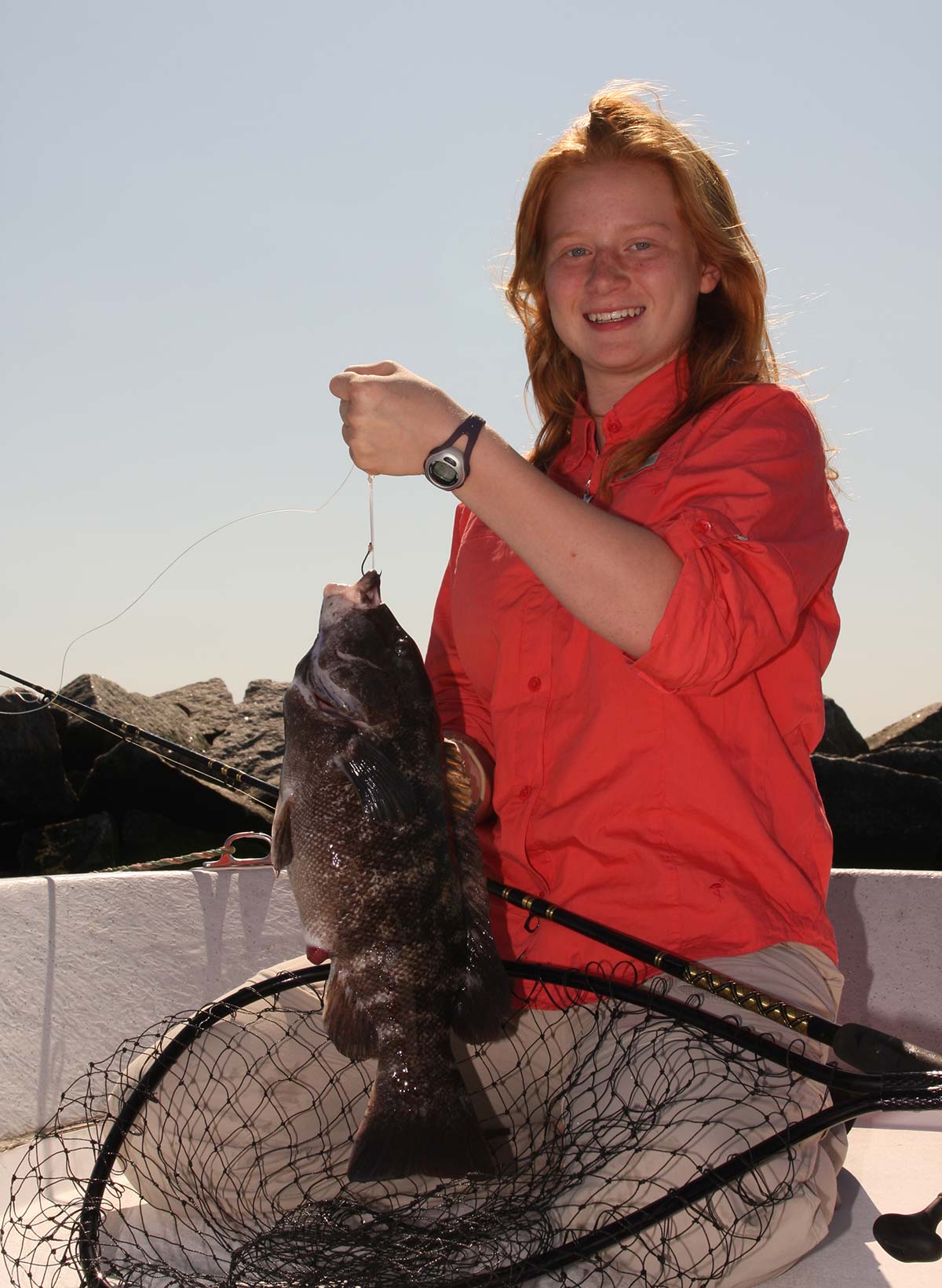
Blackfish nestle into deep gaps and holes between the boulders in breakwalls where they forage for crustaceans. Knowing this, breakwater experts don’t just randomly lower their baited hooks overboard—they actively seek out tautog lairs.
“Drop your sinker to the bottom,” explains Rich Haigh, a blackfish pro with over 40 years of experience in Long Island Sound, “and then tap the rocks with the weight as you move along the gunnel. Do this until you find a hole, which can be 4- to 8-feet deeper. Lower your rig into the hole until it hits bottom, and then wait for a bite with a tight line. Togs tend to cluster, so they’re not in every hole, and being only a few feet off the hotspot may mean no fish. This is why a guy on the port side can be hammering the fish, while a guy on the starboard side of the same boat draws blanks—it’s not only about finding a hole, it’s also about find the right hole.”
Dropping your baits into a populated hideaway is only half the trick. The bigger challenge is hooking and then wrestling the fish out of the hole. Once hooked, these strong, stubborn swimmers dash for the nearest cranny and are almost impossible to pull out.
“The key,” says Haigh, “is once you feel a bite, don’t set the hook like most guys do. Anybody swinging his rod up hard misses lots of fish. It takes self-control to resist striking. Instead, lift the rod tip slowly and gently and as high as you can. Your rod will bend from the weight of the blackfish, but if you do it correctly the fish doesn’t realize what’s going on. If you’re using the right hook, you won’t need to drive the barb home. When you finally lift the fish from its hole it goes crazy. Your drag should be set tight, so a bulldog white-chin can’t strip line and run back under cover. Once you’ve cleared the rocks you can back off on the drag a bit, if needed, and fight the fish accordingly.”
Anchors Aweigh
Proper boat positioning is critical to successful breakwater fishing. Because the bouldered walls have a sheer drop, you must anchor close to the structure—perhaps within only a couple yards. Anchoring off the rocks by only a few too many feet will place your baits on flat bottom, and that means the difference between catching a limit of tog or returning home empty-handed.
Anchoring safely against breakwaters requires calm conditions, which is usually possible on at least one side of a wall. Motor off your intended spot and set a dependable anchor with ample chain and scope length in the sand. Then idle in toward your spot at the breakwater while feeding line off the stern until your bow is within a couple yards of the wall.
Next, heave a “sacrificial” bow anchor and rope, such as a short 2 x 4 board tied to a cotton clothesline, into the rocks above the waterline. When that land anchor snags and grabs in a crevice and you’ve tied it off, pull the stern anchor line tight to bridle the boat. Minor adjustments pinpoint you over the desired area, which is usually 10- to 20-feet deep. This process is most safely and easily done with two anglers.
When you’re done fishing, and if the sea is still flat, a nimble angler can gently pull the bow in, step out onto dry rocks and retrieve the temporary anchor and rope. But if the conditions suddenly become choppy, you can cut the bow line loose, and the boat can then either be motored out or pulled away with the stern anchor. Although it’s uncommon to anchor stern to the seas, it’s preferable to placing your prop in the rocks, however some breakwall experts do anchor stern to the structure. If you prefer not to use a board (or chunk of driftwood) to anchor in breakwalls, commercially-manufactured malleable reef and wreck anchors (like the SeaSense Might Mite) are available to purchase.
Breakwall Rig
Haigh’s biggest breakwall secret, however, is his terminal tackle rig. By nature, fishing in holes lends itself to snagged hooks and lost togs that dash for cover, often attributed to the classic high-low rig with long, commercially-tied leaders dangling in the structure. Haigh’s design eliminates that liability by snelling his hooks directly inline in 50-pound fluorocarbon leader near the sinker. This rig is equally effective on rugged reefs or modest rocky bottoms because the baits are presented low and held still in the current.
Haigh attaches his inline-snelled leader to 3 feet of 80-pound mono leader before the main line. “The heavy mono,” says Haigh, “gives abrasion resistance in the nasty breakwall holes, and you can wrap it around your hand to lift fish into the boat. I never net blackfish unless they’re really big because it wastes time in tangles.”
Haigh shuns the traditional, classic blackfish hook. “Forget those Virginia-style hooks,” he says. “I snell on Gamakatsu Octopus or Owner Cutting Point 2/0 or 3/0 hooks. These super-sharp, short-shank hooks outperform the Virginia hooks in any depth, and they easily penetrate a tog’s thick, rubbery lips.”
If there are no breakwalls in your area, it’s simply a matter of studying a chart. Look for shallower, unmarked reefs that peak from 15- to 35-feet deep for the early season hunt. Unmarked reefs are preferable because they’re more difficult for the average angler to find, and as a result, haven’t been fished hard, if at all, and therefore aren’t picked out. Odds are when you move away from the crowds you’ll move into the fish.
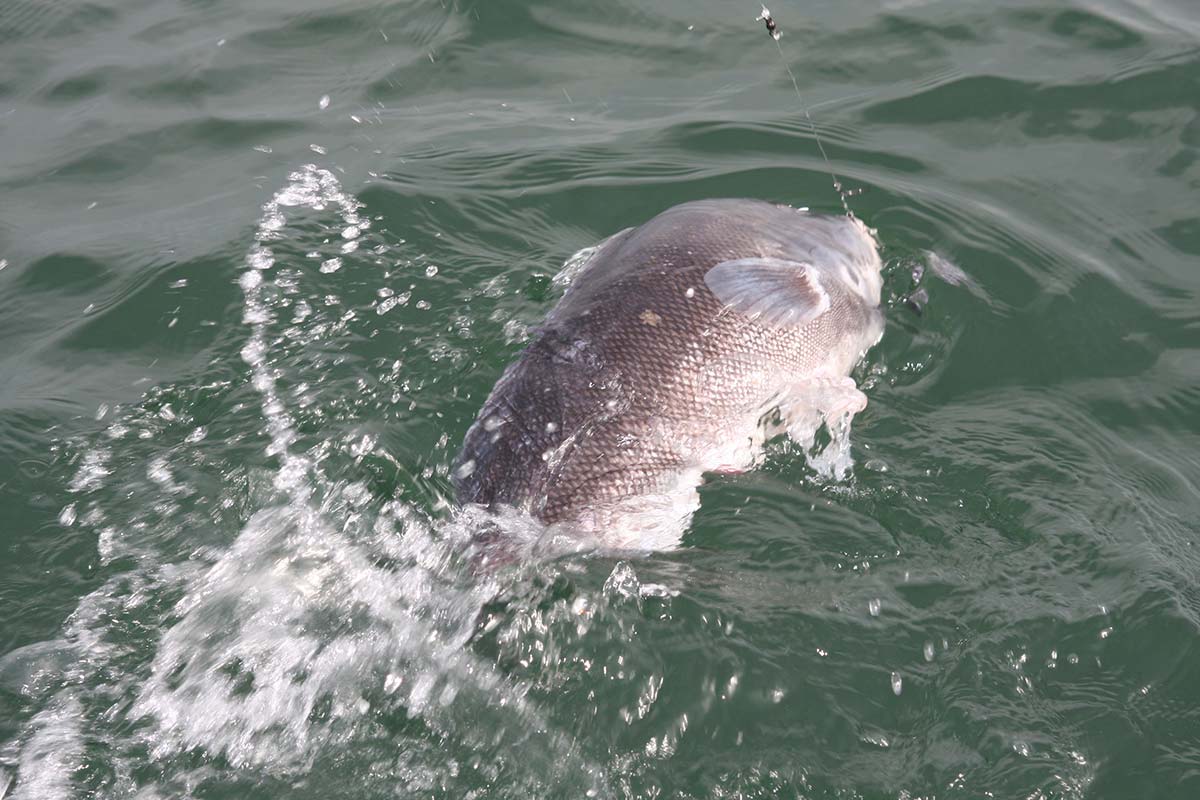
Baiting Up
Most toggers use green crabs in the fall season, although many pros consider hermit crabs the premiere tautog bait. But unless you know a lobsterman, they’re often difficult to find. Cut green crabs in half, twist off the two large pinchers and shell, and insert a hook into each cavity and out through the base of one of the legs. It’s important that the barb protrudes through the body.
Blackfish smell baits before they see them, so Haigh changes out his baits frequently to keep a juicy scent flowing among the rocks. The small Asian crabs are a favorite among the pros, including Haigh, and Haigh recommends cracking each Asian crab’s shell with your thumbnail to allow the scent to escape.
You can strip all the legs from a green crab and drop them overboard for chum. Chumming is more effective in boulders because of the reduced current flow compared to fishing on open reefs, where chum is swept down tide and away from your hooks. And remember to always check the marine forecast update before togging against a wall.


